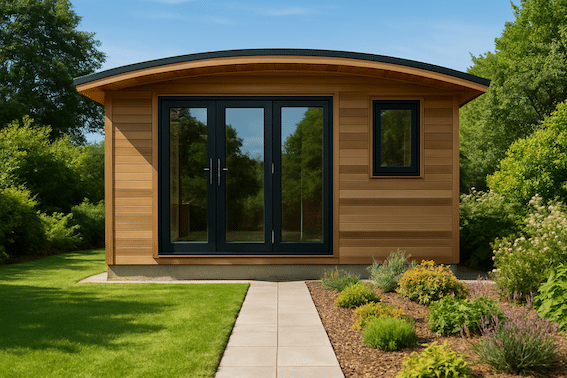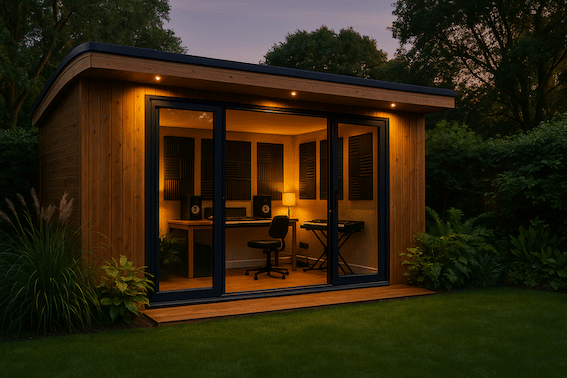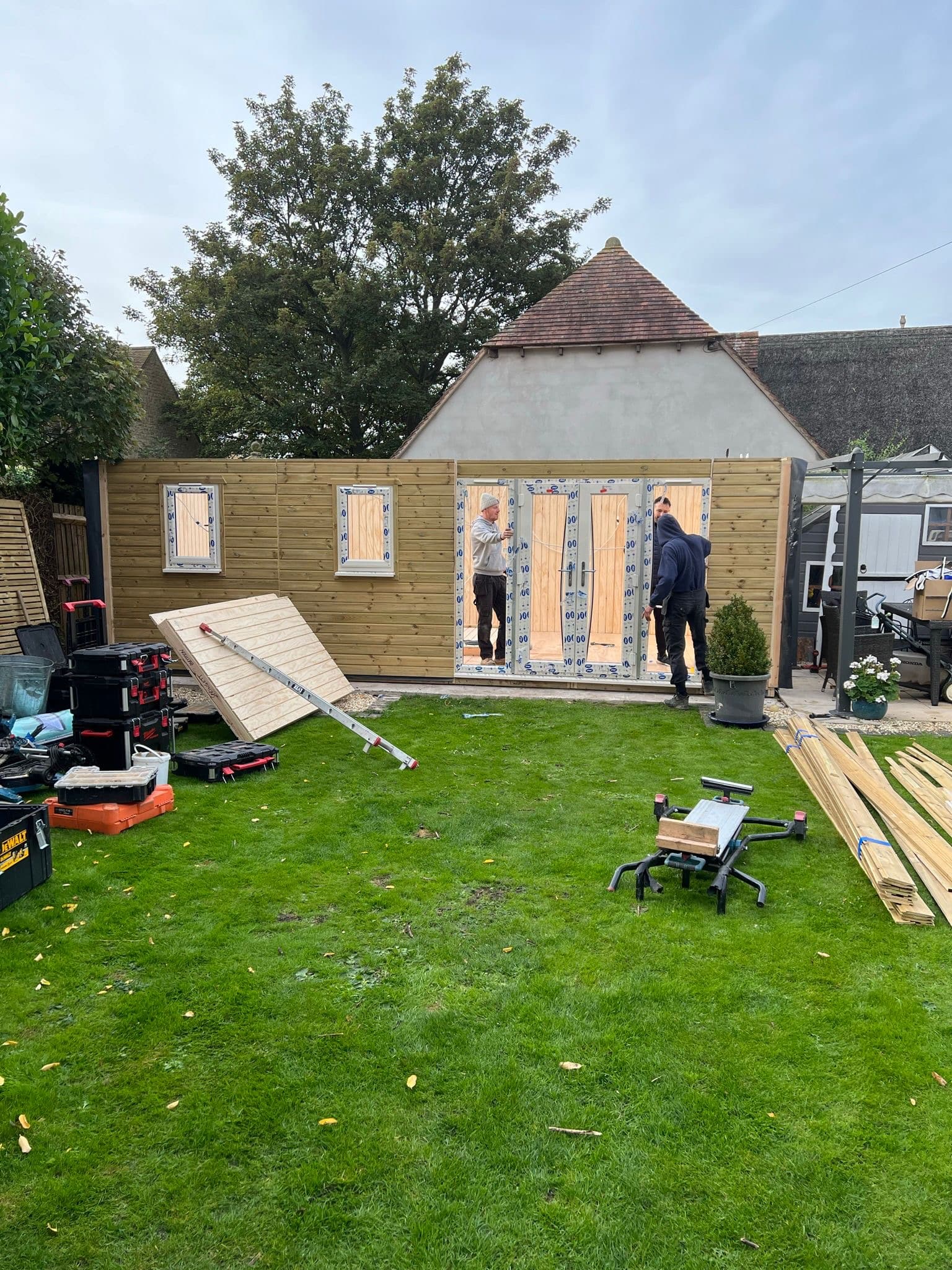
TLDR / Haven’t got the time?
Building a garden office is one of the fastest ways to create extra space at home. Unlike a house extension, which can take months, a garden room construction project is typically completed in a matter of weeks. Still, the total timeline can vary depending on factors like design complexity, groundwork, and whether planning permission is required.
In this blog, we’ll break down the full garden office construction timeline, explain what influences build time, and guide you through each stage. You’ll also find helpful information on quicker modular options and answers to common questions. For a step-by-step overview of our process, see our Construction Process page.
Table Of Contents
Why People Confuse Summer Houses and Garden Rooms
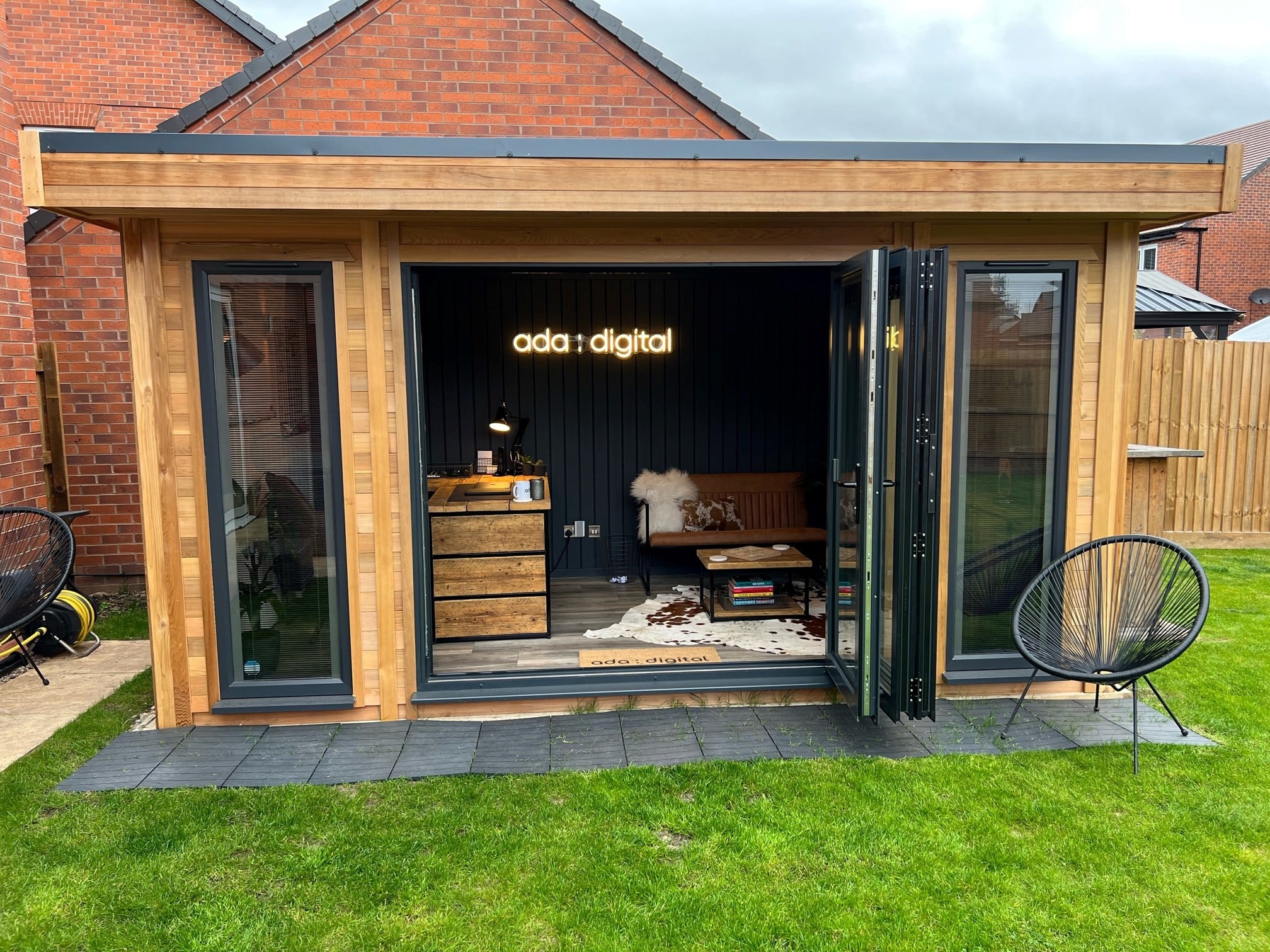
The terms summer house and garden room are often used interchangeably, but they are in fact two very different types of garden building. At first glance they might look similar, with both offering a timber structure, windows and space away from the main house. Yet the purpose, build quality and usability of each are worlds apart.
A summer house is a decorative garden retreat designed for occasional use. A garden room, by contrast, is built with insulation, double glazing and electricity, making it a functional extension of the home. This article explores the differences clearly so you can choose the option that suits your needs and budget.
What is a Summer House?
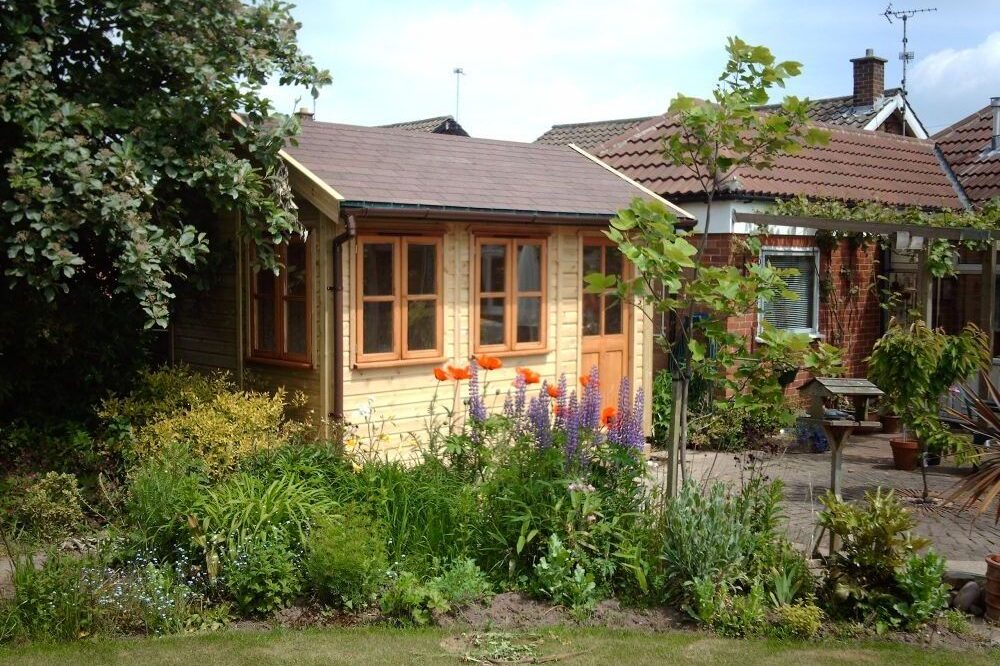
A summer house is best described as a light garden building made for enjoyment in warmer months. It is usually constructed from single-skin timber, with wide windows or glazed doors that let you make the most of your garden views.
While designs range from traditional pitched-roof styles to sleek modern cubes, the common thread is their seasonal nature. Without insulation or heating, summer houses are impractical in winter but make excellent leisure spaces in summer.
Typical features include:
-
Single-skin timber cladding
-
Large windows or glass panel doors
-
Simple bases and lighter construction
-
Prices starting from the low thousands
They work well as a reading nook, hobby space, or a backdrop for entertaining on warm evenings. If your goal is a more functional living space, you might want to look at garden rooms instead.
What is a Garden Room?

A garden room is a more substantial structure that blurs the line between outdoor building and home extension. Built with the same principles as residential construction, it includes insulated walls, floors and roofs, along with double-glazed windows and secure doors.
Unlike a summer house, a garden room is designed for comfort and usability throughout the year. Mains electricity, internet connections and heating can all be installed, making it suitable for a wide range of practical uses.
Typical features include:
-
Home offices or studios
-
Garden gyms
-
Guest rooms or teenage dens
-
Multi-purpose family living spaces
With more people working remotely in the UK than ever before, many homeowners now choose a garden room over a traditional extension. If you’re considering this, our guide to the garden office build process explains each stage clearly.
Key Differences Between Summer Houses & Garden Rooms
| Feature | Summer House | Garden Room |
|---|---|---|
| Build Quality | Lightweight, single-skin timber | Insulated, robust construction |
| Usability | Seasonal (best in warmer months) | Year-round comfort |
| Cost Range | £1,000 – £8,000+ | £10,000 – £30,000+ |
| Insulation | None or minimal | Full insulation (walls, roof, floor) |
| Windows & Doors | Single glazing | Double glazing |
| Services | Rarely has electricity | Mains power, heating, internet |
| Maintenance | Lower lifespan, frequent upkeep | Long lifespan, durable build |
| Planning Permission | Rarely required | Sometimes needed, depending on use/size |
| Common Uses | Relaxation, hobbies, summer entertaining | Office, gym, guest room, studio |
The standout difference is comfort. A summer house is a fair-weather building, whereas a garden room is built for permanent, year-round use. This difference in usability stems from the construction itself. Summer houses tend to be thinner, decorative structures, while garden rooms are carefully insulated, fitted with double glazing, and finished to a much higher specification.
Planning rules also differ. While most smaller buildings fall under permitted development, larger garden rooms or those used as guest accommodation may require formal consent. The Planning Portal is a reliable resource if you want to check what applies in your area.
When to Choose a Summer House?
A summer house is the right option if you are primarily looking for a decorative garden feature that doubles up as a seasonal retreat. They are particularly suited to those who want a casual place to read, paint, or relax outdoors without committing to a full home extension.
Choose a summer house if you:
-
Are working to a lower budget
-
Want a space to enjoy during spring and summer
-
See it more as a lifestyle addition than a functional room
If you’re mainly after aesthetics and light seasonal use, a summer house can be a good choice. But if you’re hoping to add measurable property value, a garden room is generally the better investment (check Zoopla’s guide on home improvements and value).
When to Choose a Garden Room?
you are working remotely, need space for a gym, or want a comfortable guest room, a garden room provides year-round usability.
A garden room is the best option if you:
-
Need a dedicated office, studio or gym
-
Want a permanent, flexible space you can use daily
-
See your investment as adding long-term value to your property
If this sounds like you, take a look at our Garden Rooms to explore the designs available.
Which is Best for You?
Your decision comes down to purpose and investment. If you simply want somewhere to retreat to in the summer months, a summer house will suit your needs. If you are seeking a functional extension of your home that works in every season, a garden room is the smarter long-term choice.
At UK Garden Office, we build spaces that are fully insulated, finished to the highest standards, and ready for everyday living. Our team can advise you on everything from planning considerations to design and installation.
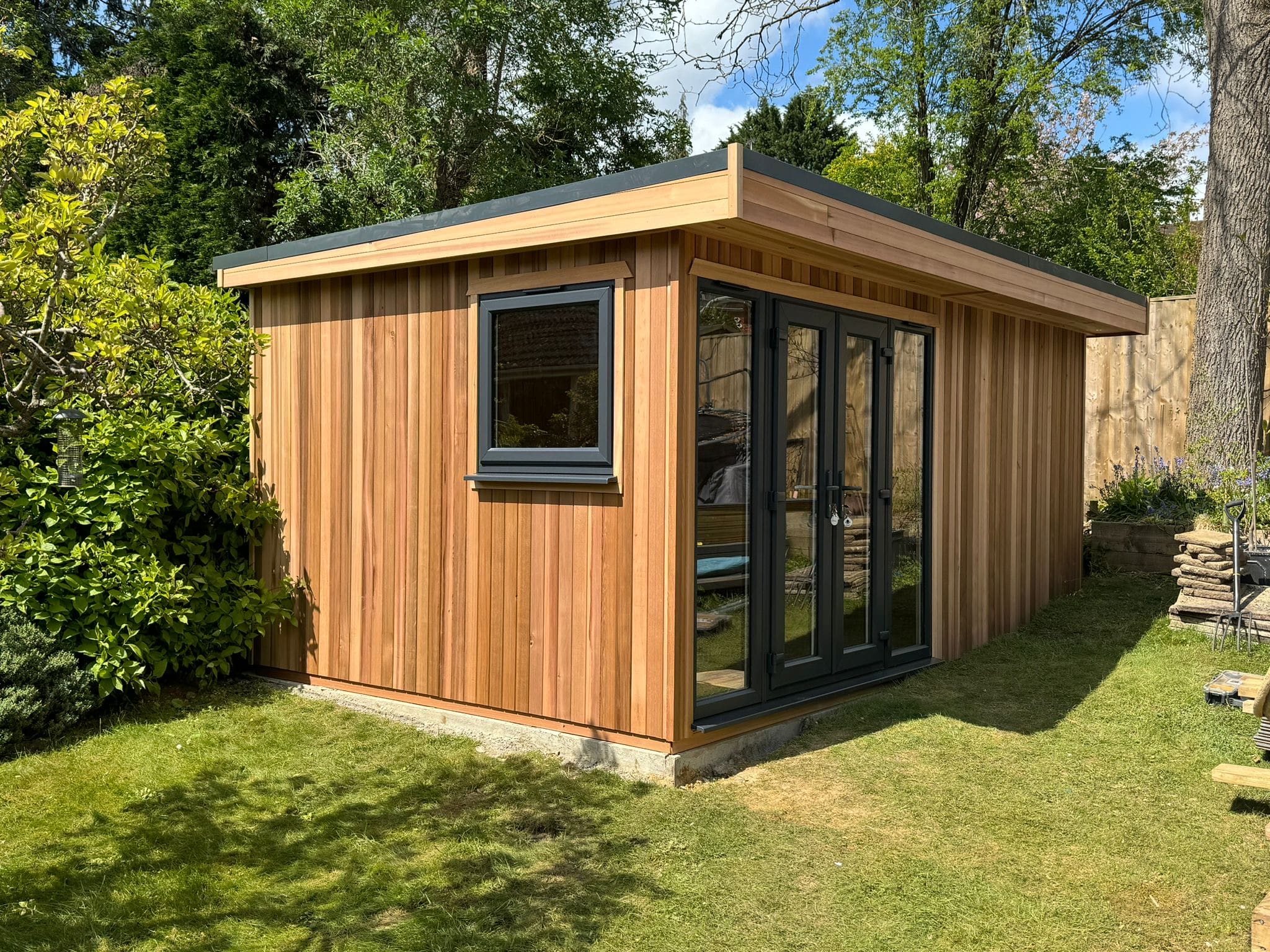
Your decision comes down to purpose and investment. If you simply want somewhere to retreat to in the summer months, a summer house will suit your needs. If you are seeking a functional extension of your home that works in every season, a garden room is the smarter long-term choice.
At UK Garden Office, we build spaces that are fully insulated, finished to the highest standards, and ready for everyday living. Our team can advise you on everything from planning considerations to design and installation.

